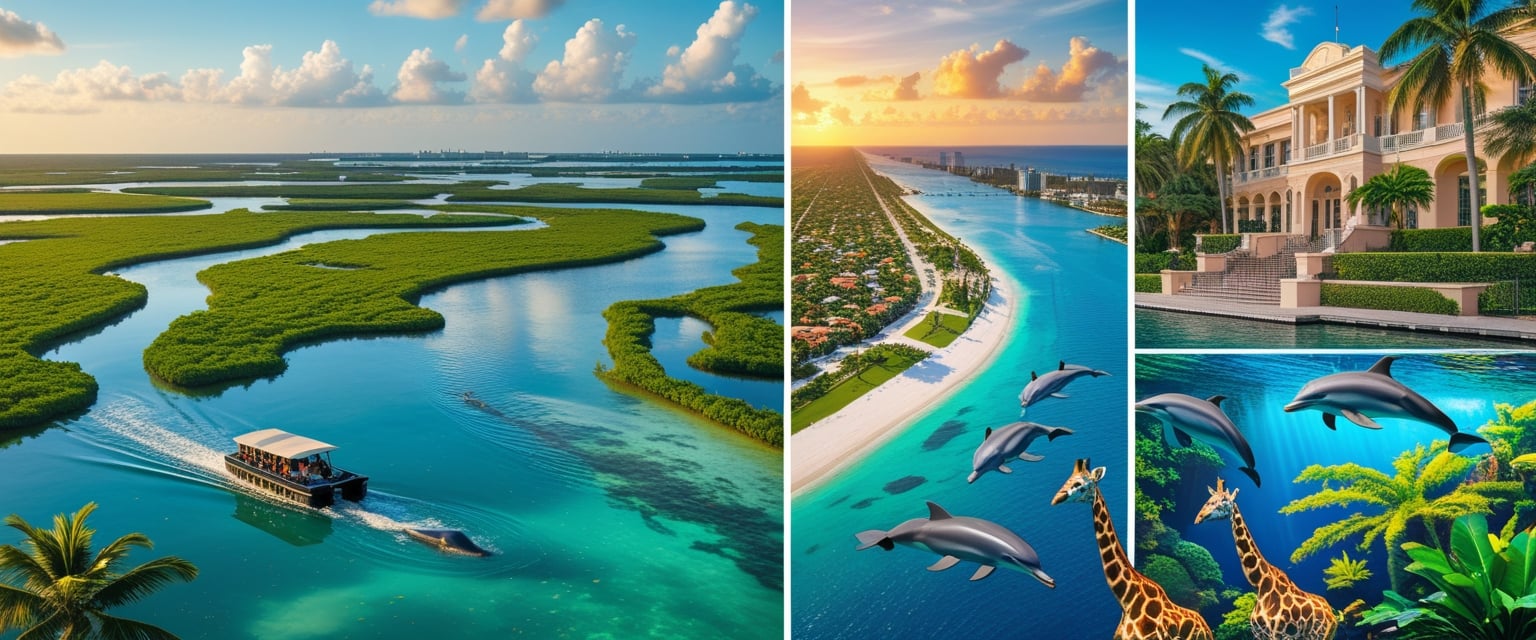Why Miami tourist attractions are popular is reflected in their variety, from South Beach and Wynwood Walls to Little Havana and the Everglades. Miami continues to attract millions each year because it offers far more than just sunshine and palm trees. Tourist attractions in Miami are popular because they combine world-class beaches, diverse cultural experiences, and unique natural landscapes in one city. From lively neighborhoods filled with art and music to tranquil gardens and historic landmarks, every corner has something different to explore.
Why Miami Tourist Attractions Are Popular becomes clear when you look at the city’s variety. From the white sands of South Beach to the colorful murals of Wynwood Walls and the Cuban traditions of Little Havana, every visitor finds something unique. Families exploring the Frost Museum of Science or the Vizcaya Museum and Gardens also experience firsthand why Miami tourist attractions are popular for all ages and interests.
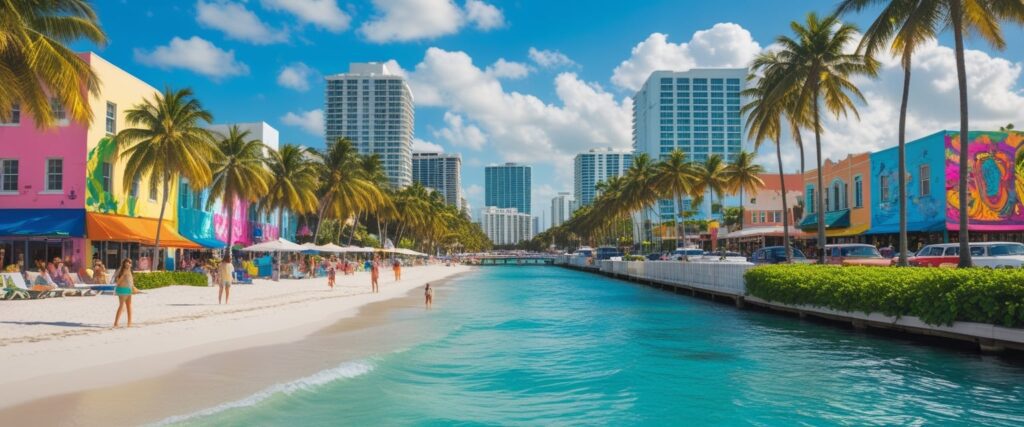
This mix of culture, history, and outdoor adventure keeps Miami on the list of must-see destinations. Whether it’s exploring the Everglades, shopping in the Design District, or enjoying live music at Bayside Marketplace, each attraction adds to the city’s lasting appeal.
Table of Contents
Why Miami Tourist Attractions Are Popular
Curious why Miami tourist attractions are popular? The mix of sun-drenched beaches, vibrant neighborhoods, and world-class art scenes explains why Miami tourist attractions are popular for so many travelers. From the iconic sands of South Beach to the colorful murals of Wynwood and the authentic flavors of Little Havana, it’s easy to understand why Miami tourist attractions are popular with families, couples, and solo explorers alike. Outdoor adventures, cultural festivals, and nearby natural escapes further show why Miami tourist attractions are popular beyond the postcard-worthy coastline. Plan your visit with a few local tips and you’ll quickly see why Miami tourist attractions are popular for repeat visitors and first-timers.
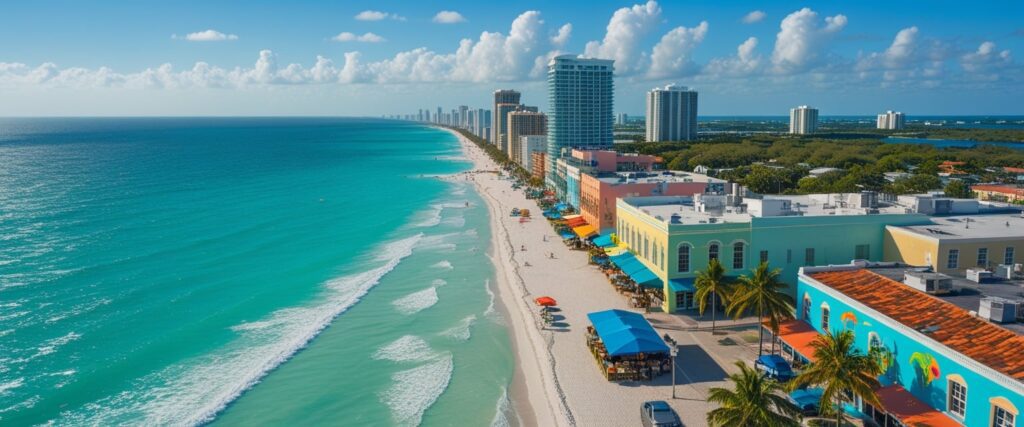
Iconic Beaches and Water Activities
Miami draws visitors with its mix of sandy coastlines, clear Atlantic waters, and a wide range of outdoor activities. Tourists come for both relaxation and recreation, from world-famous beaches to adventurous water sports and sightseeing tours.
South Beach and Miami Beach Appeal
South Beach stands out as one of the most recognized stretches of sand in the United States. It is part of Miami Beach, a barrier island city connected to mainland Miami. The area is known for its Art Deco buildings, lively nightlife, and wide shoreline.
Visitors often enjoy sunbathing, swimming, and walking along Ocean Drive. Colorful lifeguard towers add to the visual identity of the beach. This mix of design and coastal scenery makes South Beach a frequent highlight for travelers.
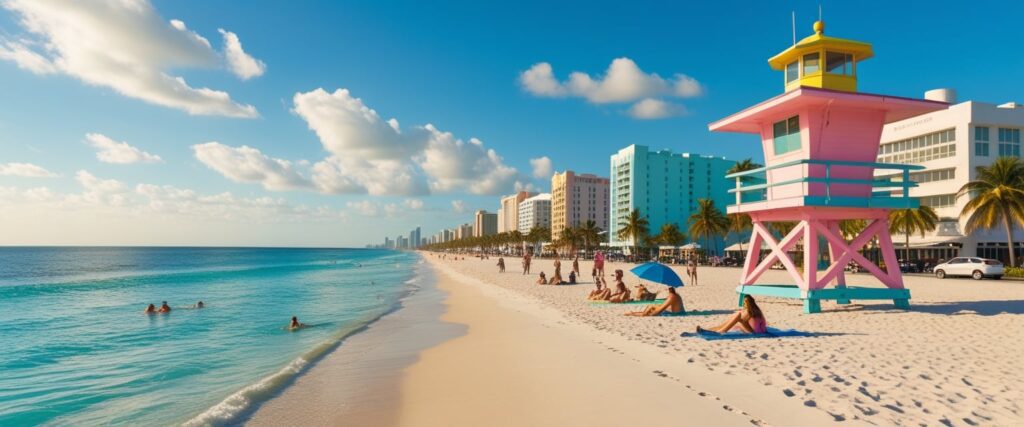
Beyond South Beach, Miami Beach offers a variety of experiences. Families may prefer quieter areas north of 21st Street, while those seeking energy and entertainment stay near the central strip. The combination of cultural landmarks and sandy shores keeps Miami Beach a consistent draw for millions of tourists each year.
Haulover Beach Park and Key Biscayne
Why Miami Tourist Attractions Are Popular: Key Reasons & Highlights can easily be seen at Haulover Beach Park, located between the Atlantic Ocean and Biscayne Bay. Known for its wide open spaces, scenic picnic areas, and even a designated clothing-optional section, the park attracts visitors seeking both relaxation and adventure. With kite-flying zones, fishing spots, and plenty of recreational options, Haulover Beach Park stands out as one of Miami’s most versatile destinations.
Key Biscayne lies just south of Miami Beach and is connected by the Rickenbacker Causeway. This island features Crandon Park and Bill Baggs Cape Florida State Park. Both parks provide calm waters, shaded areas, and scenic views of the Atlantic.
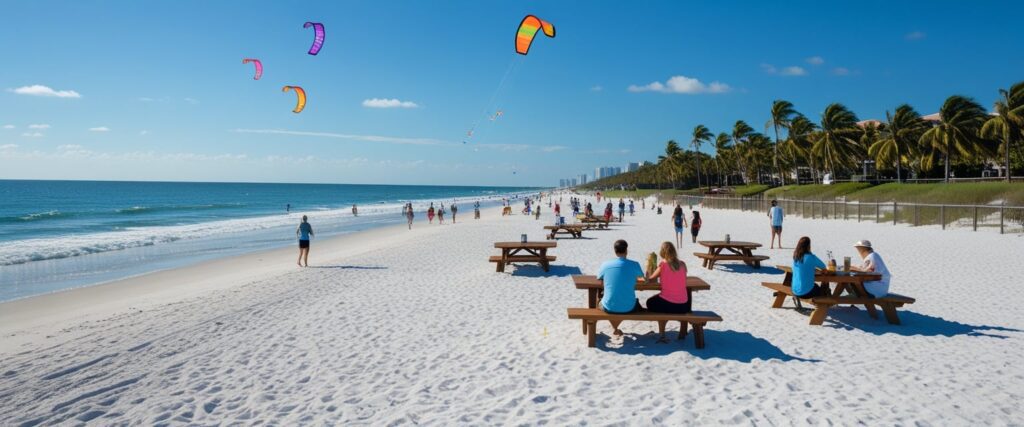
Visitors often choose Key Biscayne for a quieter alternative to South Beach. Families appreciate the shallow waters, while outdoor enthusiasts enjoy biking trails and kayaking. Together, Haulover Beach Park and Key Biscayne highlight Miami’s variety of coastal settings.
Water Sports and Adventure Experiences
Miami’s location on the Atlantic Ocean makes it a hub for water sports. Travelers can try parasailing, jet skiing, and windsurfing along the coastline. Scuba diving is also popular, with reefs and wrecks just offshore.
For those who want structured activities, operators offer lessons and guided tours. Windsurfing schools, diving shops, and rental services make it accessible for beginners and experienced athletes.
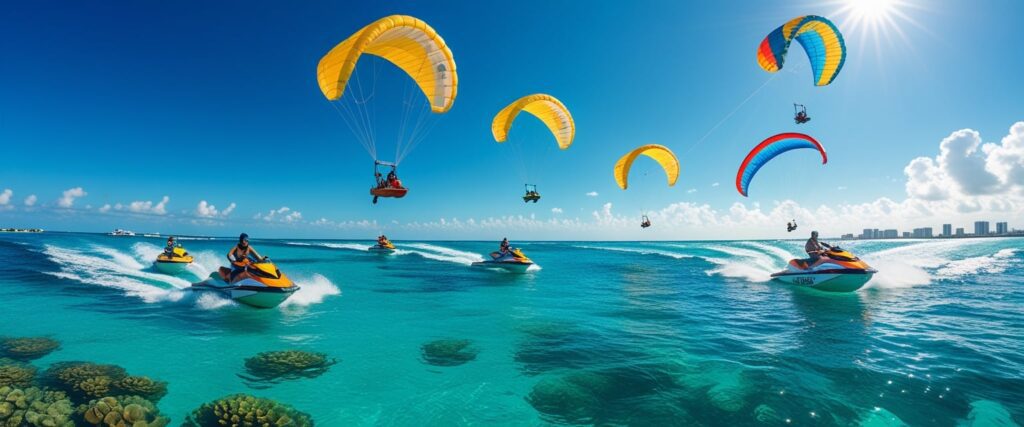
The variety of options appeals to different interests. Some visitors prefer high-energy sports like kiteboarding, while others enjoy snorkeling in calm waters. This range of activities ensures that Miami’s beaches serve both thrill-seekers and casual vacationers.
Cruise Capital and Sightseeing Tours
Miami holds the title of the cruise capital of the world. Its port welcomes large cruise ships that travel to the Caribbean and beyond. Many tourists begin or end their vacations here, adding to the city’s international appeal.
Beyond cruises, sightseeing tours give visitors another way to explore. Speedboat sightseeing tours along Biscayne Bay and the Miami coastline provide views of celebrity homes and city landmarks. Smaller boat charters allow for fishing trips or sunset cruises.
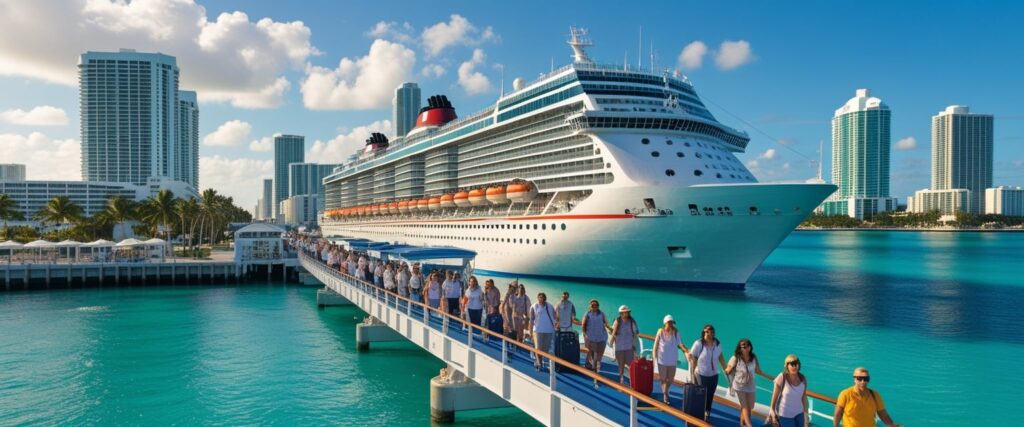
This combination of cruise travel and local tours strengthens Miami’s reputation as a coastal hub. Whether boarding a Caribbean-bound ship or taking a short boat ride, travelers experience the city from the water as much as from the shore.
Unique Cultural and Artistic Attractions
Miami’s appeal extends beyond beaches and nightlife, with neighborhoods and landmarks that highlight art, history, and immigrant traditions. Visitors find cultural districts that showcase architecture, murals, music, and cuisine, each reflecting the city’s diverse communities.
Little Havana and Calle Ocho
Little Havana represents the Cuban-American community that shaped much of Miami’s identity. The neighborhood centers around Calle Ocho, a street lined with cigar shops, Cuban bakeries, and open-air cafés.
The area is known for Maximo Gomez Park, where locals gather to play dominoes, and for its walk-up windows serving Cuban coffee. Each March, the Calle Ocho Music Festival draws large crowds with live salsa, Latin jazz, and street food.
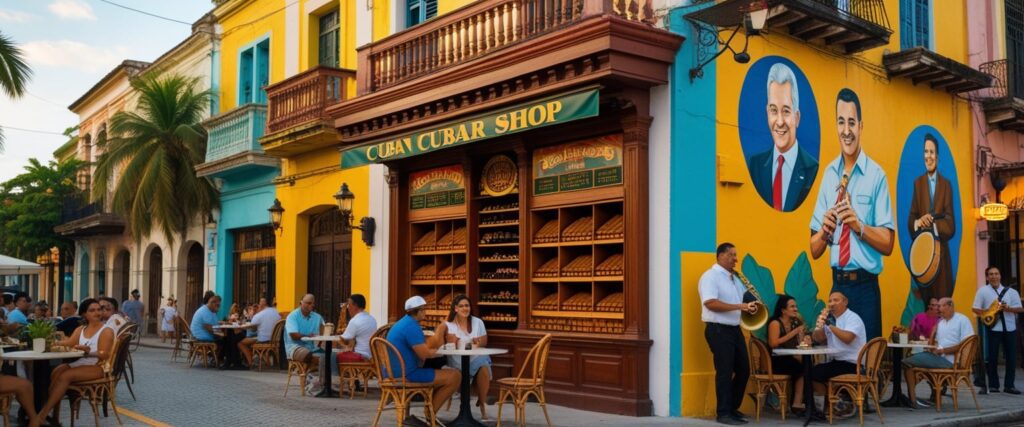
Murals of Cuban heroes, hand-rolled cigars, and traditional restaurants make the district a living cultural hub. It offers travelers a chance to experience daily life, not just staged attractions. Little Havana remains one of the most authentic cultural neighborhoods in Miami.
Wynwood Walls and Street Art
The Wynwood Walls transformed an industrial warehouse area into a world-famous outdoor art gallery. Founded in 2009, the project brought together international street artists to create large-scale murals on building exteriors.
Today, the district includes more than 50 artists’ works, with new pieces added regularly. According to Top 10 Miami Attractions That Are Actually Worth the Hype, Wynwood attracts millions of visitors each year who come to explore both the curated walls and the surrounding galleries.
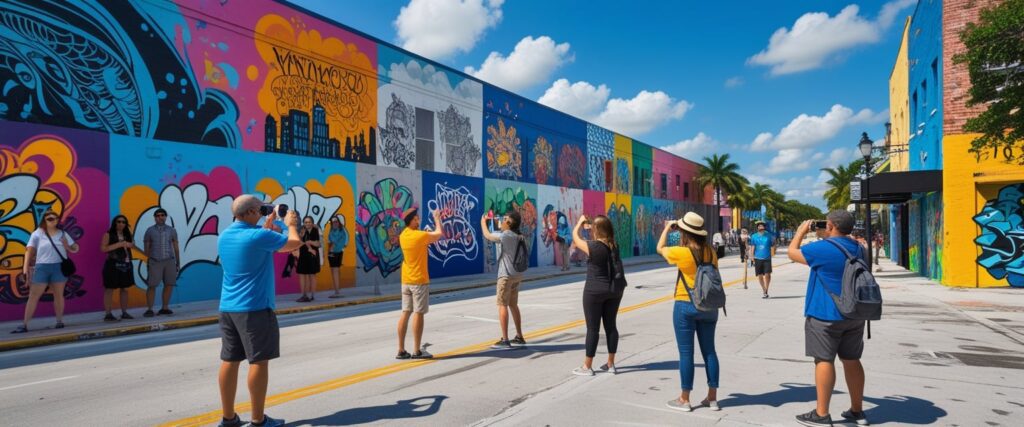
The neighborhood also features craft breweries, cafés, and design shops that complement the art scene. Guided tours explain the cultural impact of street art and highlight the stories behind the murals. For many travelers, Wynwood offers one of the most accessible introductions to Miami’s contemporary arts scene.
Art Deco District and Ocean Drive
The Art Deco District in South Beach preserves over 800 historic buildings from the 1920s and 1930s. The pastel-colored facades, neon lights, and geometric shapes define Art Deco architecture in Miami.
Ocean Drive is the most photographed street in the district. Visitors walk past restored hotels, outdoor cafés, and iconic lifeguard towers that represent Miami’s coastal style. At night, the neon signs illuminate the strip, reinforcing its reputation as a cultural landmark.

Walking tours explain how preservation efforts saved the area from demolition in the 1970s. Today, the district is both a nightlife hotspot and an architectural showcase, blending entertainment with history. It remains one of Miami’s most recognizable attractions.
Little Haiti and Multicultural Neighborhoods
Little Haiti highlights the Haitian community’s influence on Miami’s culture. The neighborhood features Caribbean markets, Haitian restaurants, and the Little Haiti Cultural Complex, which hosts art exhibits, dance performances, and community events.
Murals and public art celebrate Haitian independence and leaders, while shops sell traditional crafts and foods. Festivals showcase konpa music, drumming, and Creole cuisine, offering insight into the immigrant experience.
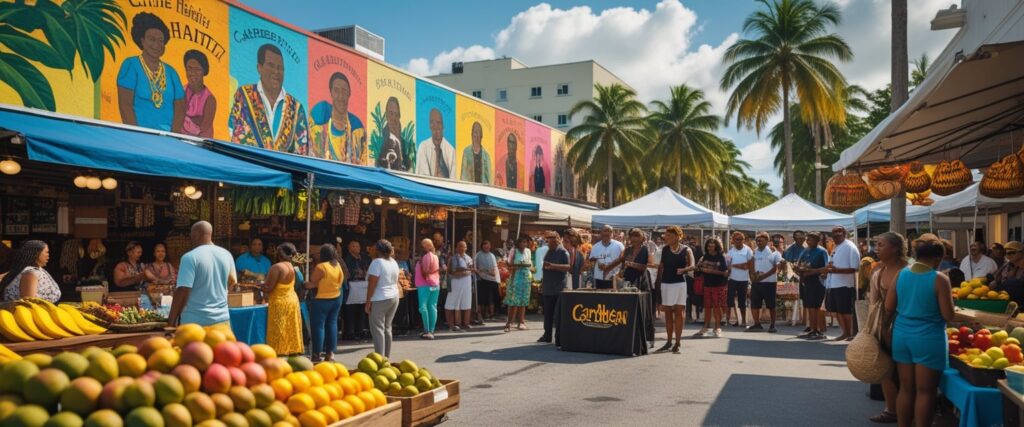
Beyond Little Haiti, other multicultural neighborhoods in downtown Miami and nearby areas display influences from the Caribbean, Latin America, and beyond. Together, they show how Miami’s identity is built on immigrant traditions and artistic expression. These districts provide travelers with authentic cultural experiences that go beyond typical tourist stops.
Natural Wonders and Outdoor Experiences
Miami offers easy access to some of Florida’s most unique landscapes. Visitors can explore vast wetlands, spot rare wildlife, and take trips to nearby islands that combine tropical scenery with cultural history.
Everglades National Park Adventures
Why Miami Tourist Attractions Are Popular often includes the natural wonders nearby, and Everglades National Park is a prime example. Spanning over 1.5 million acres of wetlands, it is the largest subtropical wilderness in the U.S. and only an hour and a half from the city showing once again why Miami tourist attractions are popular for day trips filled with adventure and wildlife.
One of the most common activities here is an airboat tour, which allows visitors to glide across shallow marshes while spotting alligators and wading birds. For a quieter experience, many choose canoeing or kayaking along the park’s waterways.
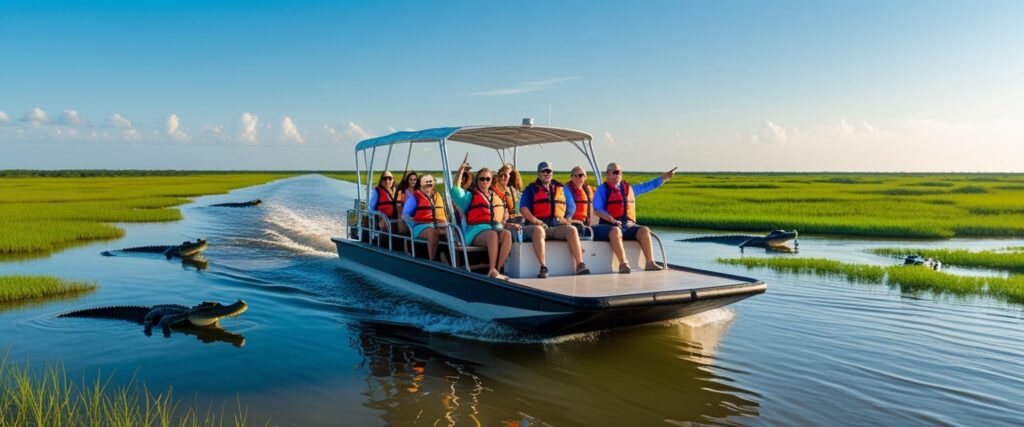
Hiking trails such as Shark Valley and Anhinga Trail offer safe, easy access to wildlife viewing. The park is also known for its ranger-led programs, where naturalists explain the ecosystems and conservation efforts.
For those who enjoy biking, Shark Valley’s 15-mile paved loop provides a chance to see the park’s landscape at a slower pace. Everglades National Park remains one of the most important natural attractions near Miami.
Wildlife Encounters and Eco-Tours
Miami’s location provides opportunities to see species that are rare in other parts of the United States. The manatee, often called a sea cow, is one of the most popular animals to spot. They are most often seen in the cooler months near warm waters around Biscayne Bay and Oleta River.
Eco-tours often combine kayaking, paddleboarding, or boat rides with wildlife viewing. These guided trips focus on mangrove forests, bird habitats, and marine life. Visitors may see herons, iguanas, and even dolphins depending on the season.

For families, Jungle Island offers a controlled setting to learn about exotic animals while still staying close to downtown Miami. While not a wilderness park, it provides an introduction to the region’s biodiversity.
Many eco-tour operators emphasize conservation, teaching visitors about the fragile ecosystems that make Miami unique. This balance of education and recreation makes wildlife tours a popular choice for nature lovers.
Florida Keys and Key West Getaways
South of Miami lies the Florida Keys, a chain of islands stretching over 100 miles into the ocean. The drive along the Overseas Highway is a highlight itself, with bridges offering wide views of turquoise waters.
Key Largo, the first major island, is known for coral reefs and diving spots within John Pennekamp Coral Reef State Park. Snorkeling tours here give travelers a chance to see colorful fish and underwater landscapes.
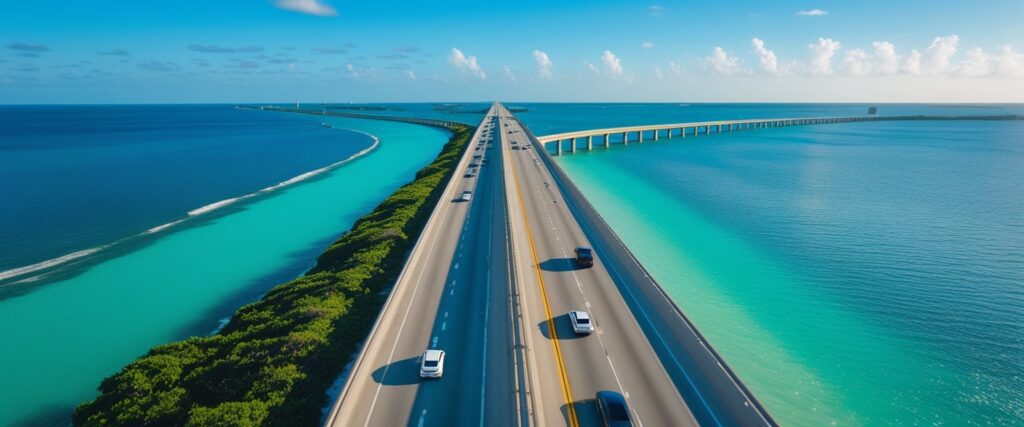
Farther south, Key West combines natural beauty with cultural attractions. The island is famous for sunsets at Mallory Square, historic homes, and relaxed beaches. It is also a gateway to Dry Tortugas National Park, where visitors can tour Fort Jefferson and snorkel in clear waters.
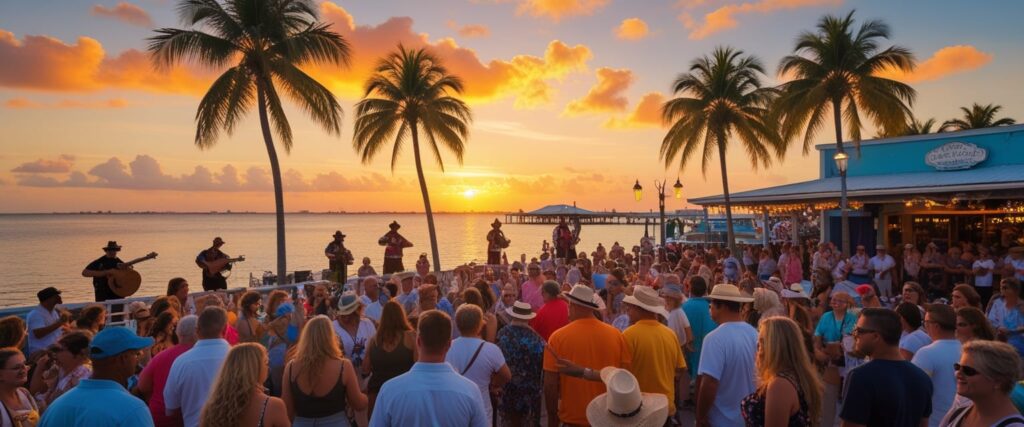
Trips to the Keys provide a mix of outdoor adventure and small-town charm. Many visitors see it as an easy extension of a Miami vacation, whether for a single day or a longer stay.
Historic Landmarks and Family-Friendly Destinations
Miami blends historic estates, marine attractions, and community events that appeal to both visitors and locals. These sites highlight the city’s cultural heritage while also offering fun and educational activities for families in Florida’s coastal city.
Vizcaya Museum and Gardens
The Vizcaya Museum and Gardens stands out as one of Miami’s most notable landmarks. Built in the early 20th century as the winter estate of industrialist James Deering, the property combines European-inspired architecture with subtropical landscaping.
Visitors often explore its ornate mansion, filled with decorative arts and antiques. The surrounding gardens feature fountains, sculptures, and waterfront views, making it a popular spot for photography and cultural tours.
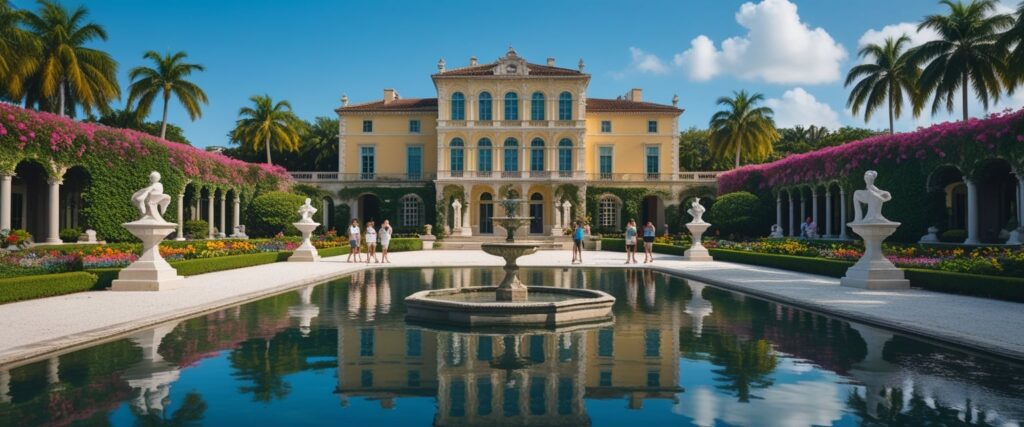
Events also play a role in its appeal. Locals attend outdoor yoga, seasonal festivals, and even full moon gatherings on the grounds. For those looking to save, Miami-Dade library card holders can access free passes for small groups, as noted by Time Out’s guide to Miami attractions.
Miami Seaquarium and Marine Life
The Miami Seaquarium has long been a family attraction focused on marine education and conservation. Located on Virginia Key, this facility introduces visitors to sea turtles, manatees, and tropical fish found in South Florida waters.
Animal shows and exhibits highlight dolphins and sea lions, while interactive programs allow children to learn about marine biology in engaging ways. Seasonal events often feature themed presentations tied to ocean awareness.

The Seaquarium also emphasizes the importance of protecting coastal ecosystems. Its location makes it a convenient stop for families exploring nearby beaches or other island attractions. The best time to visit Miami for outdoor activities, including the Seaquarium, is during the cooler and drier winter months when crowds are lighter.
Family Activities and Local Events
Families in Miami find a wide mix of activities beyond historic estates and aquariums. Zoo Miami, for example, offers cageless exhibits and safari-style cycles for groups, while Jungle Island combines wildlife encounters with treetop adventure courses. Both are highlighted in Miami’s top attractions list.
Local festivals also create opportunities for cultural immersion. Calle Ocho’s monthly Viernes Culturales event includes live music, art displays, and Cuban food. Outdoor spaces such as the Miami Beach Botanical Garden host yoga sessions and family workshops.

These attractions balance entertainment with learning, giving families practical ways to enjoy Miami’s cultural and natural offerings year-round.
Conclusion
When looking at why Miami tourist attractions are popular, the answer lies in their unique blend of beaches, culture, and natural beauty. From the iconic shores of South Beach to the artistic vibes of Wynwood Walls, every corner reflects why Miami tourist attractions are popular among travelers of all ages. Families discover museums, aquariums, and gardens that showcase history and learning, while adventure seekers experience firsthand why Miami tourist attractions are popular through water sports, eco-tours, and cruises. Cultural neighborhoods like Little Havana and Little Haiti further explain why Miami tourist attractions are popular, offering authentic traditions and vibrant street life. Even natural escapes like the Everglades and the Florida Keys highlight why Miami tourist attractions are popular, combining wildlife with outdoor adventure. Whether it’s a first-time trip or a repeat visit, the city’s mix of relaxation, entertainment, and diversity continues to prove why Miami tourist attractions are popular. Ultimately, what makes Miami unforgettable is exactly why Miami tourist attractions are popular—they offer something extraordinary for everyone.
Frequently Asked Questions
Why Miami Tourist Attractions Are Popular is clear when you see the city’s family-friendly museums, historic estates, cultural neighborhoods, and scenic beaches. From romantic gardens to free and paid experiences, visitors quickly discover why Miami tourist attractions are popular for blending art, nature, and diverse heritage in one destination.
What are the top attractions for families visiting Miami?
Families often enjoy the Phillip and Patricia Frost Museum of Science, which combines an aquarium, planetarium, and interactive exhibits. The Zoo Miami and Miami Children’s Museum also provide engaging and educational experiences for kids.
Which landmarks in Miami are considered must-see for first-time tourists?
First-time visitors often head to South Beach for its Art Deco architecture and vibrant shoreline. Other highlights include Wynwood Walls, the Vizcaya Museum and Gardens, and Little Havana, all of which showcase Miami’s cultural and artistic identity.
What free activities can tourists enjoy in Miami?
Travelers can walk through the Wynwood Arts District to see colorful murals without an entry fee. Strolling along Little Havana’s Calle Ocho and enjoying live street music also provides a no-cost cultural experience. Public beaches like South Beach are free to access as well.
How do Miami’s beaches contribute to its popularity as a tourist destination?
Miami’s beaches offer soft sand, warm water, and easy access to dining and nightlife. South Beach remains the most famous, but quieter options like Crandon Park Beach and Bill Baggs Cape Florida State Park attract those seeking a more relaxed setting.
What unique cultural experiences attract tourists to Miami?
Visitors often explore Little Havana, where Cuban coffee, music, and street festivals highlight the area’s heritage. The Miami Design District blends luxury shopping with public art installations, offering a mix of culture and commerce. Annual events like the Calle Ocho Festival also draw large crowds.
What are the recommended romantic spots for couples in Miami?
Couples often visit the Vizcaya Museum and Gardens for its European-style architecture and waterfront views. The Fairchild Tropical Botanic Garden provides a serene setting with rare plants and butterfly exhibits. Sunset cruises from Bayside Marketplace also appeal to those seeking a scenic evening experience.
Is Miami a nice place to visit? What are some things to do there, and how about crime also?
Yes, Miami is an exciting destination famous for its beaches, nightlife, and cultural mix. You can sunbathe on South Beach, explore art at Wynwood Walls, and take a boat tour around Biscayne Bay. Like any big city, crime exists, but most tourist areas are well-patrolled. Staying aware, avoiding isolated spots late at night, and using common sense will keep your trip safe.
I am traveling to Miami for 3 nights with my husband. What beaches should I not miss?
For a romantic trip, don’t miss South Beach (vibrant and iconic), Crandon Park Beach (calmer with palm groves), and Sunny Isles Beach (less crowded and upscale). If you both enjoy quiet moments, head to Bill Baggs Cape Florida State Park for stunning sunsets.
